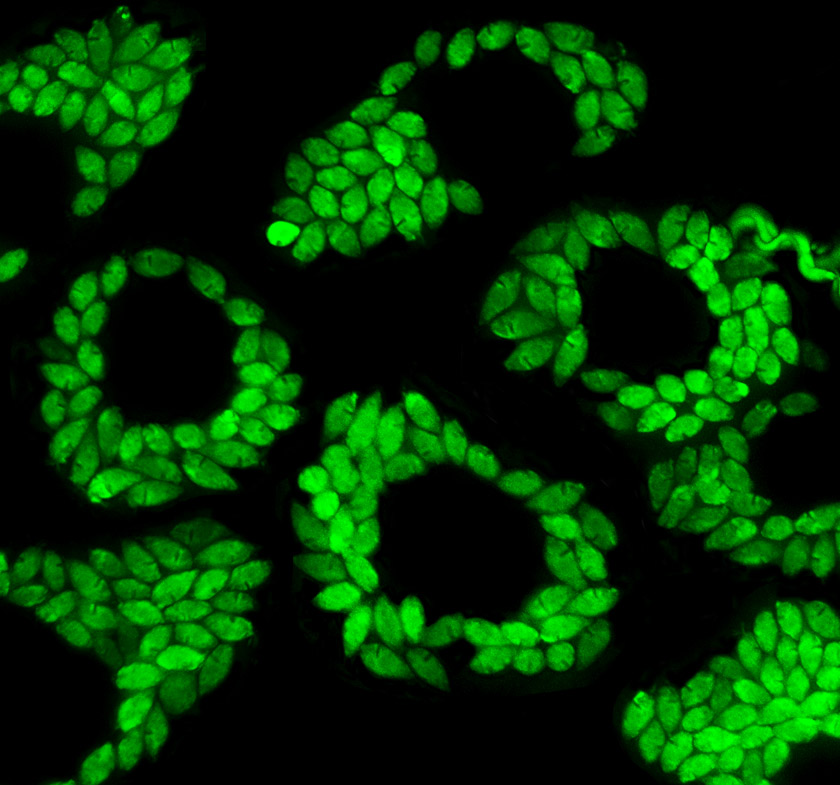By: Alan Flurry

A team led by scientists at the University of Pennsylvania and University of Georgia provides thousands of researchers around the world with access to the Eukaryotic Pathogen Genomics Database (EuPathDB.org), a collection of resources for analyzing large-scale datasets associated with microbial pathogens. These include the parasites responsible for malaria, sleeping sickness, and toxoplasmosis; the fungi responsible for thrush, aspergillosis and Valley Fever; and many other important diseases. In parallel, a team led by investigators at the University of Notre Dame has been responsible for similar resources covering invertebrate vectors of disease (VectorBase.org), including the mosquitoes transmitting malaria, Zika, and yellow fever, the ticks responsible for Lyme disease and Rocky Mountain Spotted Fever, and others.
To ensure that this important work continues, the National Institute of Allergy and Infectious Diseases, a part of the National Institutes of Health, has awarded a new contract to integrate these resources, worth up to $7.2 million in 2019-2020. The five‐year award for this project, rebranded as VEuPathDB.org (The Eukaryotic Pathogen, Host & Vector Genomics Resource) could total as much as $38.4 million if all associated options are exercised.
The patterns revealed by such “Big Data” provide insight into important diseases, permit the development of diagnostic methods, and define drug and vaccine targets. But to be useful, these immense datasets must be sensibly organized and made conveniently accessible to the researchers worldwide. The integrated VEuPathDB database hosts data on thousands of genomes, representing hundreds of species, along with extensive information on isolate provenance, gene function and the like.
The award is based at Penn, and directed by David S Roos, E Otis Kendall Professor of Biology in the School of Arts & Sciences. Key subcontracts include the University of Georgia (Joint PI Jessica C. Kissinger, Distinguished Professor of Genetics and Bioinformatics in the Franklin College of Arts and Sciences and the Center for Tropical and Emerging Global Diseases), University of Notre Dame (Joint PI Mary Ann McDowell, Associate Professor of Biological Sciences at the Eck Institute for Global Health). Additional co-investigators include Professors Christian Stoeckert of Penn’s Perelman School of Medicine, Mark Caddick of the University of Liverpool, George K Christophides of Imperial College London, and Paul Flicek, Associate Director of the EMBL-EBI (European Bioinformatics Institute).
“It is wonderful to see the continued investment by NIH, the Wellcome Trust and others in resources that make performing much needed global research on infectious diseases both easier and better,” Kissinger said. “Datasets are larger and more complex than ever due to significant advances in technology. These breakthroughs create challenges for making the resulting data truly accessible and usable by the average researcher. We strive to remove barriers, integrate diverse data and accelerate the speed with which new hypotheses can be generated and ideas tested both in silico and in the lab.”
“A critical aspect of this now joint program will be its accessibility throughout the world, empowering any infectious disease investigator to interrogate these highly complex databases in comprehensible and productive ways,” said Dan Colley, UGA professor of microbiology and member of the CTEGD who has conducted extensive research on n schistosomiasis in western Kenya. “These databases have led, and the merged data base will lead, to the design of new drugs and studies on how to better control and eliminate these major public health challenges, such as malaria, toxoplasmosis, yellow fever, eastern equine encephalitis and Lyme disease.”
“Since its conception, corresponding with the release of the first parasite genomes, EuPathDB has been a transformative tool in our search for a better understanding of human disease and parasite biology,” said Stephen Hadjuk, Professor Emeritus of biochemistry & molecular biology at UGA whose lab investigates trypanosomes, the causative agent of an human African sleeping sickness. “Today, it’s difficult to imagine any serious research on parasites and host pathology that doesn’t rely, at least to some extent, on EuPathDB. The decision to incorporate the vectors database into the eukaryotic pathogens database was brilliant, and makes this is an exciting new chapter in the EuPathDB story.”
“Innumerable investigators, including my own laboratory, rely on daily access to the high quality genomic and functional datasets made available by the VEuPathDB Project,” says Keith Gull, Professor of Molecular Microbiology at Oxford University. “Sustainable support for such resources is imperative if we are to capitalize on the promise of modern technologies for scientific discovery and translational application.” Joe Heitman, James B Duke Professor / Chair of Molecular Genetics & Microbiology at Duke University agrees: “Inclusion of fungal pathogens under the BRC umbrella has greatly enhanced our ability to study important human mycoses. Cross-species comparisons provide insights into the biology and pathogenesis of these fascinating organisms, which can be deadly – but can also serve as workhorses for valuable biotechnology development.”








